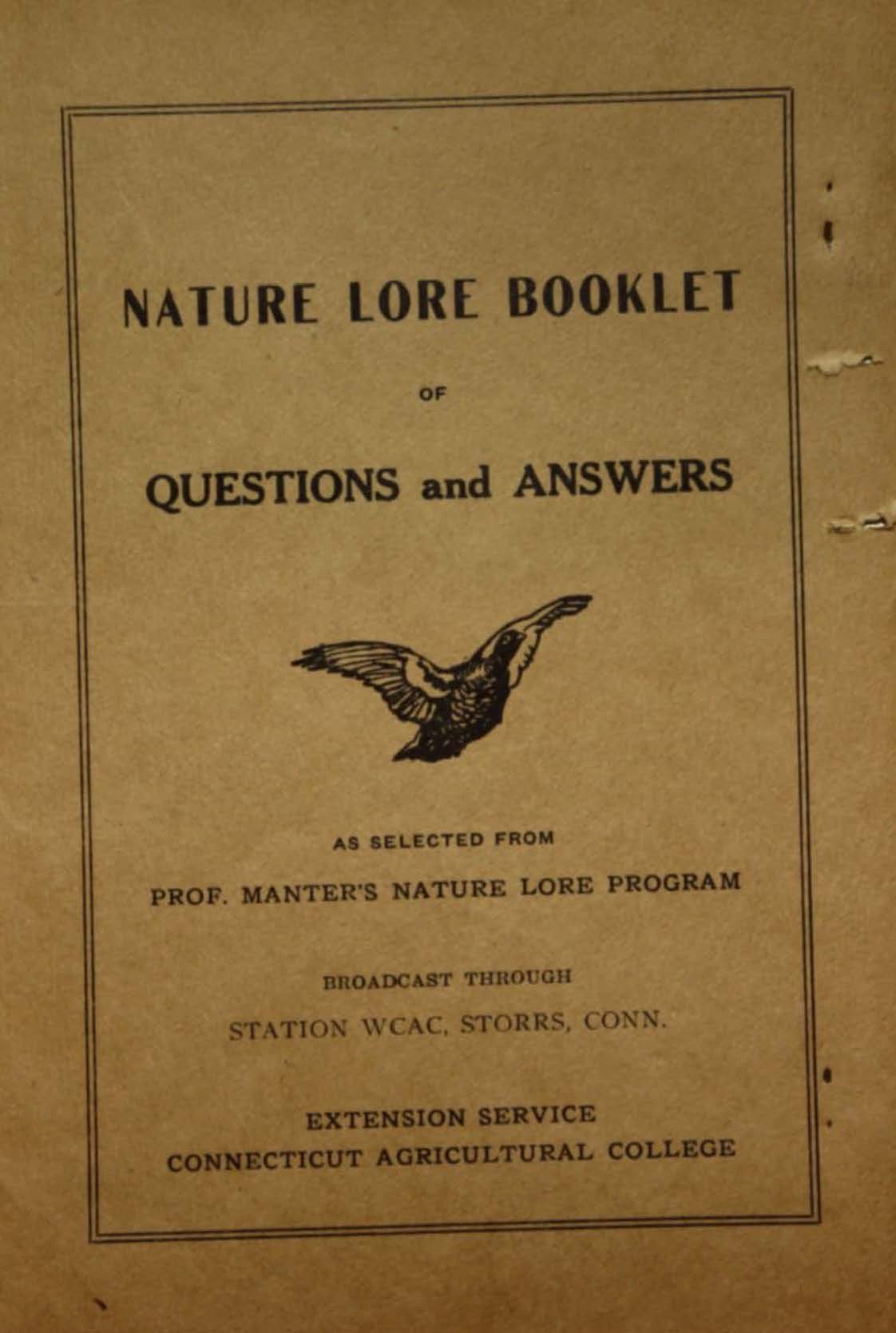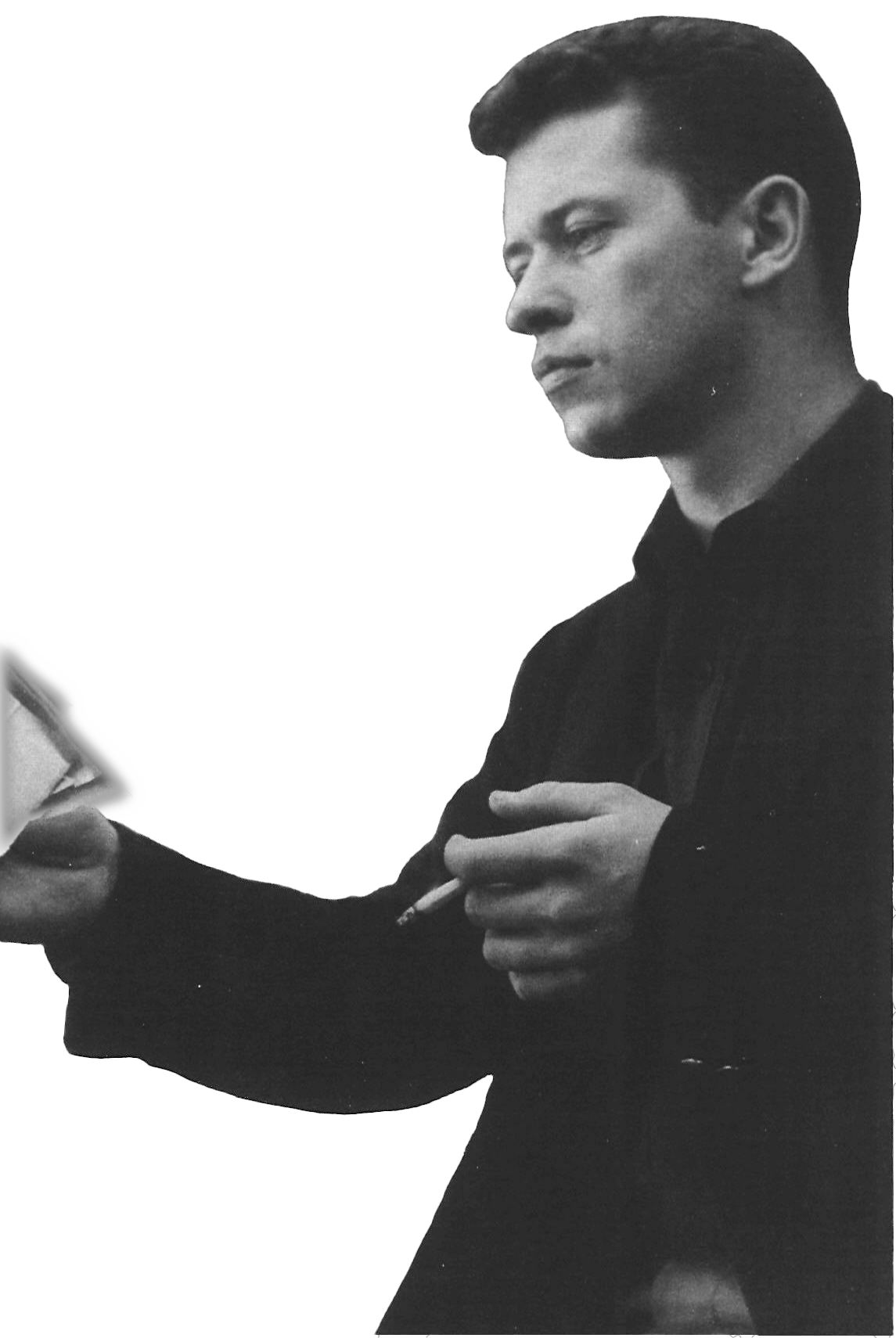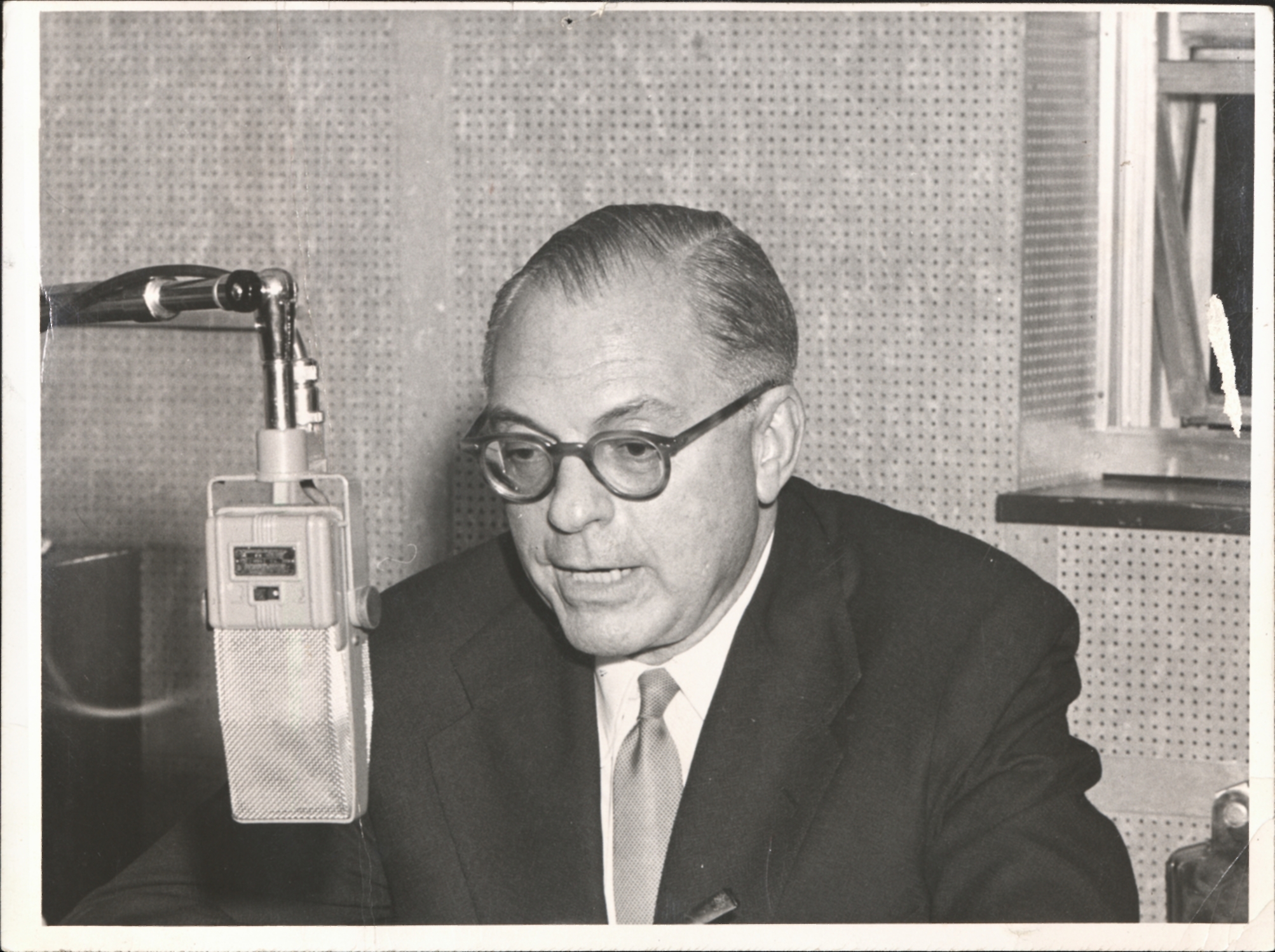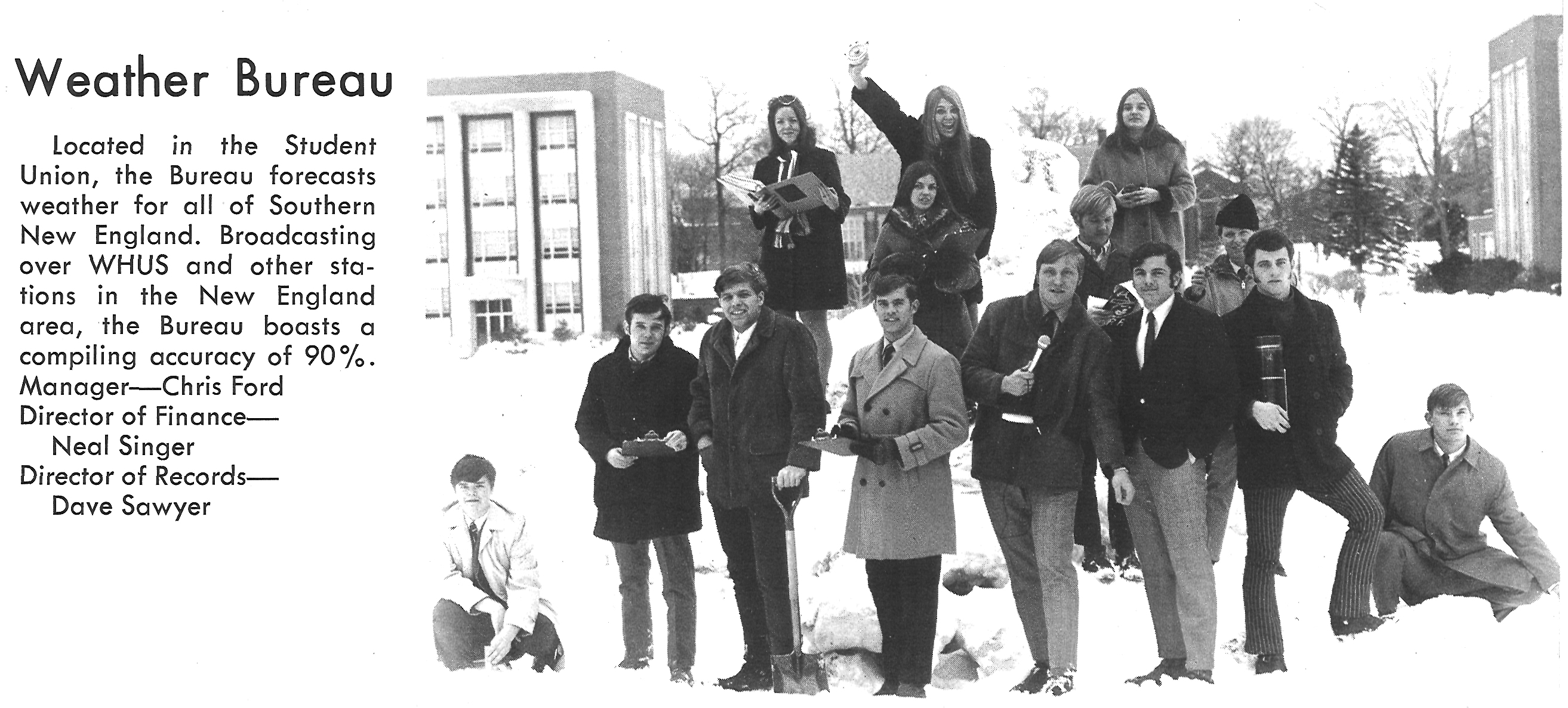Written by Patrick Boots and edited by Jonathan Kopeliovich
WHUS has long been a staple for music discovery. But for decades, it’s also played a vital role in fostering public discourse through its news and public affairs programming. As a noncommercial radio station, it is WHUS’s responsibility not only to entertain, but also to inform. Early broadcasts included lectures and educational content, which over the years brought fully-fledged newscasts, participation in independent networks, and necessary exposure not available on mainstream radio.

In its early history, WHUS broadcast agricultural programming as a benefit to students at Connecticut Agricultural College and the greater listening area at the time, which mostly comprised of farmland.



In the 1960s, the Husky Network began a relationship with the Columbia Broadcasting System (CBS) to share newsreels of important national stories such as presidential speeches. In return, WHUS would help record stories of importance in Connecticut, in collaboration with then-partner WTIC AM, and share them with CBS in exchange for the affiliation. Jeff Tellis, the station manager in 1962 and 1963, facilitated these connections.
One program from this time, Campus Spotlight, was produced as part of the UConn television and radio education center to highlight and promote University achievements. Student journalists wrote and produced stories for the air, including interviews and other information.
From 1969 to the mid-1970s, a student weather bureau was formed on campus.

WHUS also frequently collaborated with the UConn Radio and Television Center. Don Nelson, who was its head, collaborated with students and professors to create educational media, which was then sent out to stations like WHUS and WTIC.
Along with the expansion of music programming in the 1970s, WHUS started to broadcast programming that focused on minority groups, women, and students. At the same time, UConn students had established a Women’s Center on campus, which formed the Women’s Radio Collective to program news and special programming of pertinence. The Women’s Information Newsgathering Service (WINGS) was used to add national and regional stories of interest.
WHUS also broadcast news stories from the Minority Newswire and Alaskan-made Native News Network, giving voices to under-represented populations and Native Americans.
Technologically, sending audio from the source of news to the studio had been a challenge. In the 70s, some WHUS reporters modified telephone handset cords to connect to cassette recorders, allowing recorded content to be telephoned in next-to-live. The tape could be used later for a replay or re-used for another story. Although the audio fidelity was less than perfect by modern standards, telephone switchboards hadn’t yet converted to digital compression and the analog equipment used with similar bandwidth on the actual FM signal resulted in an acceptable sound. The listening public could tell that the report came from “men on the street”.
The Campus and Connecticut Journal also expanded to include four newscasts per day, both in the morning and evening, rivaling commercial music stations’ news output.
In 1977, WHUS joined the fledgling alternative Pacifica network, which originated at KPFA in Berkeley, CA. Pacifica allowed WHUS to broadcast news independent of other networks such as CBS or ABC, which had changed ownership and missions. Pacifica programming was also designed for noncommercial stations and often focused on progressive or alternative viewpoints of politics, world events, and culture.
Throughout the 1980s, additions of syndicated programming enhanced the WHUS public affairs lineup. Through an arrangement with the BBC World Service, the BBC International Call aired featuring news and humanitarian updates from throughout the world and the BBC Science Magazine included profiles on scientific achievement and research.
The Focus on Health and original Science Journal programs alongside the Great Atlantic Radio Conspiracy originated at WHUS as public affairs features, with broad and local news and discussions.
WHUS public affairs programming exponentially increased in the 1990s. Pacifica network programming was delivered by mail on cassette tape, and later on CDs, including Democracy Now, a daily alternative newsmagazine, and This Way Out, a show focusing on LGBT issues in contemporary settings.
In 1997, concerns over the political nature of Pacifica’s programming resulted in WHUS’ decision to switch affiliations to National Public Radio through a partnership with WNPR(?). To rebroadcast NPR, WHUS installed a satellite receiver and dish on the Student Union rooftop.
WHUS also started its world wide web presence, publishing programming and organizational updates online, and starting to publish local and regional news of interest. The WHUS webpage was initially available through a subsection on the main UConn Student Activities webpage.
Today, students produce a weekly news magazine, Husky Nation News, and write stories that are published on the WHUS webpage.
Audio
“Percy and Ed on Campus,” a piece from the 1960s produced by Russ and DJ Tom Lillis humorously protesting UConn’s attempt to control the Student Senate and WHUS”
In November 1972, news department member Mark Roy, along with Howard Weinstein, covered the entirety of election night (Nixon). Those are split into the three audio tapes below. “Included in the election coverage are a number of background pieces prepared by staff of WHUS news – and many members of the WHUS staff at the time went to local polling places to report the results of local elections,” according to Mark Roy.